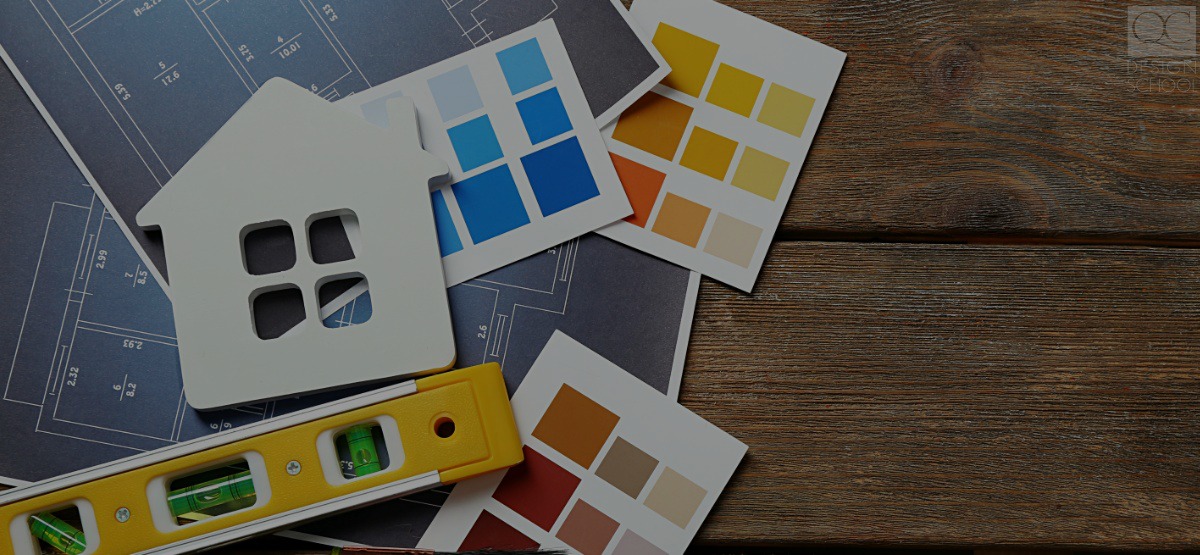There’s no doubt about it – a career as a home designer is exciting and unpredictable. No matter how prepared you think you are for certain situations, all interior decorating jobs are different. Not only will you be working with clients on demanding schedules, you’ll also be liaising closely with contractors, and this is where things can get complicated.
How do you maintain great working relationships with other professionals while ensuring that you create a sensational home design? Stick with us – we’re going to take you through the important steps of working with both a contractor and a client, and how to best plan your interior designs through it all.
Hammer out details early
The beginning of a new interior decorating project is a clean slate. You’re just getting to know your clients (and they’re getting to know you as well!), and together you’re coming up with home design plans that will change their living space and ultimately, their lives.
The first step in this process is the client consultation, where decisions are made about changes in the home interior. As the home decorator, you’ll need to put together a list of both your responsibilities within the project, as well as those that are beyond your scope of work, such as flooring replacements or the renovating rooms. Once you have this list, it’s time to get in touch with the contractor.

As an experienced interior decorator, you’ll build a network of renovators and contractors that you know are hard-working and trustworthy. This comes with the role of a home decorator – you cultivate close working relationships with other professionals in the industry and need each other to complete projects for clients. This isn’t to say that you won’t occasionally disagree with a contractor, or that there won’t be tense moments – it is a time-sensitive project, after all, and both the budget and your clients’ expectations are on the line.
This relationship is extremely important in the early days of a new home design project, so as soon as you have the details needed from your client consultation, meet with the contractor to determine their responsibilities. Items to hammer out include how the materials will be purchased, who will pick them up and deliver them, and how they will be paid for. You want to put these agreements in writing – you can either use a change-order request form or another, homemade form to ensure that all of the details are in place and agreed on, and can be referred back to as the project progresses.
Knowing where your work ends and your contractor’s work begins is an excellent first step to beginning a project. The last thing you want is a “he-said, she-said” situation halfway through where there’s confusion about who is responsible for what. The earlier these details are figured out, the better!
Keep the lines of communication open
Not all clients are created equal, and there are some who would prefer to stay out of interior decorating jobs and contract work until close to the finishing date. As mentioned earlier, no two days are alike in this career, and you’ll meet all kinds of different clients! In general, however, we recommend keeping in touch with both your contractor and client on a weekly basis throughout the home design project.
This frequent communication is important for a few reasons. When you conducted your initial consultation, your client shared their vision of the space with you, and important decisions were made. Making these home design plans and starting the actual work, however, are two very different tasks. You know what they say about the best laid plans…

Perhaps the new fixtures in the renovated bathroom now don’t match the overall décor of the room. This is an unexpected issue, but if a few fixtures were considered and ultimately thrown out because they didn’t match the client’s taste, this is what happens. Now that your clients have made a decision, you need to come up with new bathroom ideas that complement the fixtures. These things happen!
Discussing this change with the contractor is key, as it’s a significant change that may require construction work on their part. Of course, this will have an impact on the overall cost of the project and timeline. You cannot hide this from your clients, so be as honest and open as possible – they want the best custom interior possible, and even though it may take longer to achieve it, you can assure them that it will be worth the wait.
Be flexible
Sticking to specific duties and a schedule is key when working with a contractor. Your client has hired your services to make specific changes to their home in a certain time frame. However, even the best home design plans change shape, and your client may end up with a slightly different home interior than expected. This is often a pleasant surprise, as they’ve been part of the process and have witnessed these shifts.
In your role as a home decorator, keeping a positive and flexible attitude will ensure your success with clients and contractors alike. Even if your initial interior design plan has changed over the course of the project, perhaps it turned out for the best due to structural needs, construction concerns, or the client changing their mind. If so, the best way to handle this is by going with the flow.

Not only will this put your client at ease (they won’t sense any stress from you), it will also improve the relationship you have with contractors and renovators. Tension is difficult to deal with in any situation, so doing your best to stay pleasant and not sweat the small stuff will go a long way — it can even result in referrals down the line!
